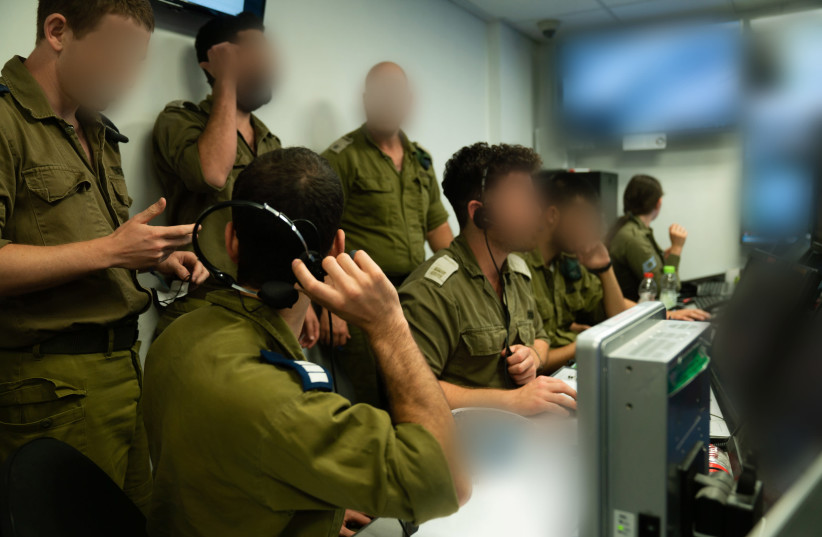by Yonah Jeremy Bob
How could blind spots on tunnels impact post-war outcome?
 |
The full scale and scope of the Israeli intelligence and defense establishment on October 7 will likely only become clear several months or more down the road when evidence starts being brought before an expected commission of inquiry.
But after weeks of waiting, The Jerusalem Post has already learned about some pieces of the intelligence failure from IDF intelligence officials, both from what they have said and what they have not said.
One of the primary failures of Israeli intelligence was extremely high confidence that Hamas was deterred from starting any war with Israel in the foreseeable future.
Several pieces of information were used to prove this deterrence, including the fact that Hamas had stayed out of multiple fights between Islamic Jihad of Gaza and Israel.
It was costly for its reputation within Gaza that Hamas stayed out of these fights, something which seemed to prove even more that the terror group was deterred from starting a new conflict.


What happened to the tunnels?
But a fundamental premise in believing that Hamas was deterred was also the exaggerated impact that the IDF thought its May 2021 attacks had on the Gaza-based terrorist group during that 11-day conflict.
One of the IDF’s highlights in that conflict was its claim to have destroyed most or at least a very substantial portion of Hamas’s underground tunnel network (also called “the Metro”), such that it could take many years to reconstitute.
As of October of this year, it has turned out that the IDF either did not damage the Hamas Metro in May 2021 nearly as badly as it thought, or that the military greatly underestimated Hamas’s capacity for and speed of repairing its tunnel network.
The tunnel network was only one of many pieces of the October 7 invasion, and likely not even a central one.
But the fact that the IDF so greatly misjudged how badly it had set back Hamas’s tunnel network goes to the heart of the Israeli intelligence community’s overall misjudgment about how deterred Hamas was as it came out of the May 2021 conflict.
PUT SIMPLY, Hamas or any similar actor, is more likely to fear fighting another conflict against an adversary who greatly damaged it, but is much less likely to fear fighting another one with that same adversary if the “losses” in the prior conflict were minor.
Since the tunnel losses to Hamas were far less significant than the IDF thought, Israel completely misunderstood not only the state of play on October 7, but the aggressor's entire perspective dating back to the end of the May 2021 conflict.
This Israeli misjudgment regarding the tunnels does not only have historic applications to October 7 and before, but also impacts the current conflict and going forward.
When IDF intelligence officials discuss how confident they are about their ability to thoroughly destroy and flush out the vast majority of Hamas’s forces from their tunnel hiding places, they apparently may once again be overestimating their understanding of the challenge.
IDF intelligence feels so omnipresent above ground and has improved so much in their ability to identify some tunnel entrances, that they may still be significantly overestimating their capacity to identify, fight, and kill Hamas operatives below ground.
When IDF intelligence officials are confronted with this premise, they say they have already adjusted to whatever they might have missed in May 2021, but given that so much of intelligence now is based on drones, aircraft, and other above-ground platforms, their renewed confidence on an issue they have repeatedly misjudged (the first big misjudgment was the 2014 Gaza War) is questionable.
To be clear, the IDF has radically progressed in its ability to detect and destroy tunnels a few years after the 2014 Gaza War – and does seem to have learned new tricks to handle tunnels even since May 2021. There seem to be at least dozens of victories in flushing out Hamas forces from tunnels in the last 10 days of the invasion. But Hamas has also adjusted, and generally appears to have such vast resources for digging new tunnels, that the IDF may still lag behind.
Combine Hamas’s tunnel resourcefulness with how little the IDF knows about which and what quantity of Hamas terrorists have faded into the civilian population in the North or the South (with no intention of fighting until some much later guerilla warfare stage), and IDF intelligence may make serious future mis-judgments about how many Hamas forces remain to fight.
This could impact not only how large an insurgency the IDF faces after it “wins” over Hamas in the “main” war, but also how effective any third party will be in controlling Gaza in the face of a Hamas-attempted resurgence further down the road.
Yonah Jeremy Bob
Source: https://www.jpost.com/israel-news/article-771806
No comments:
Post a Comment